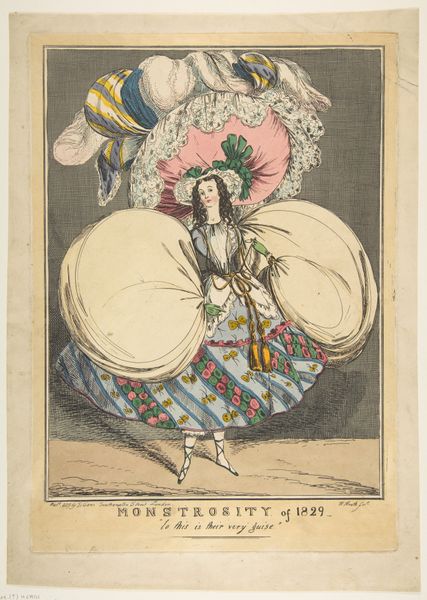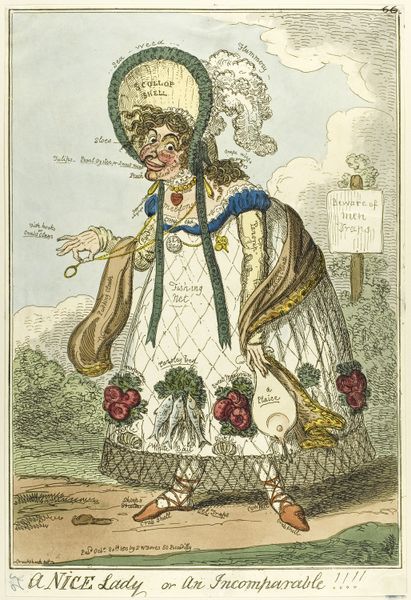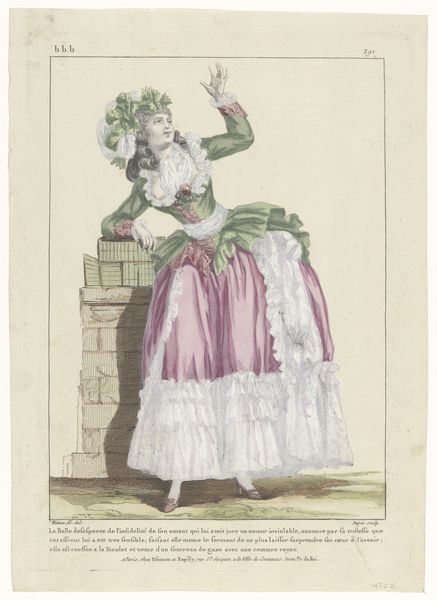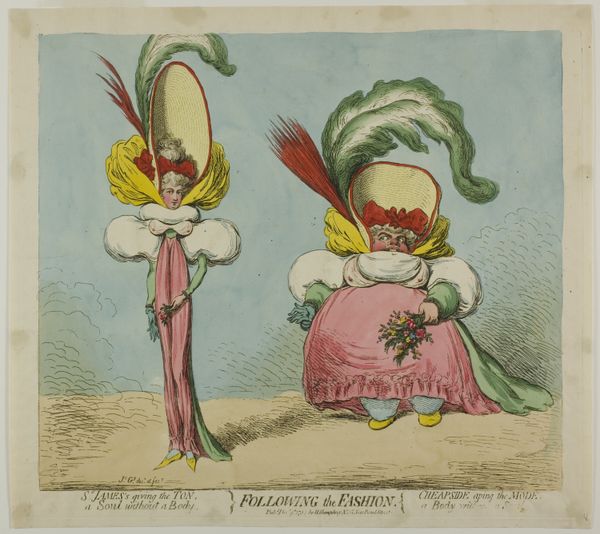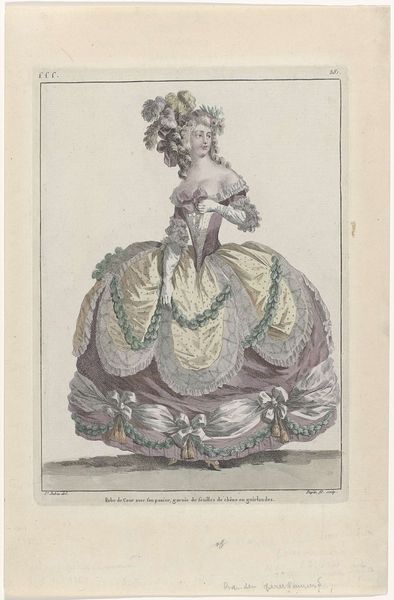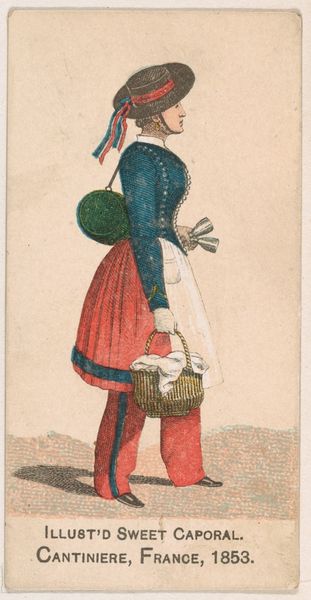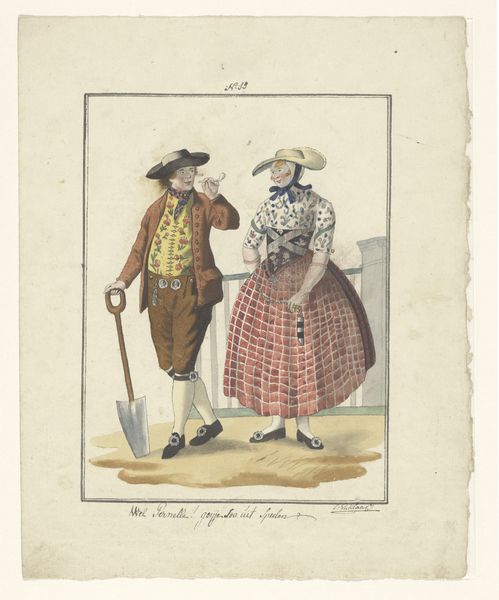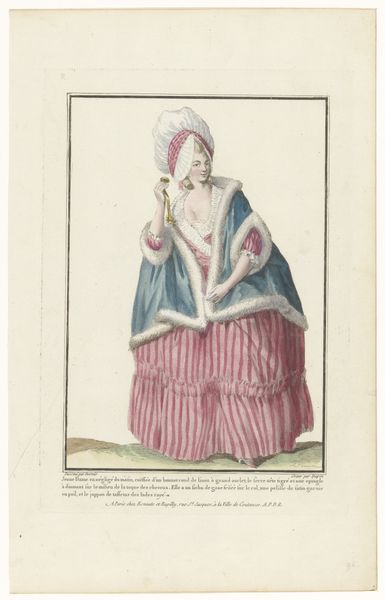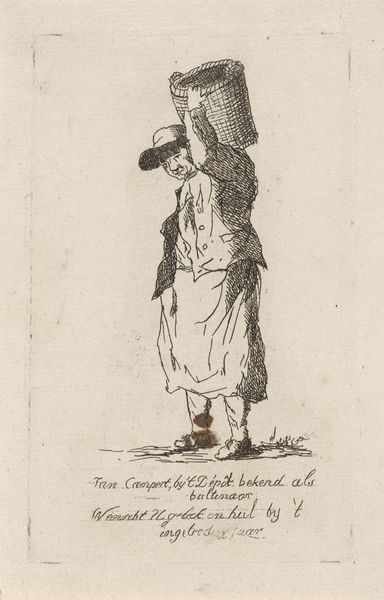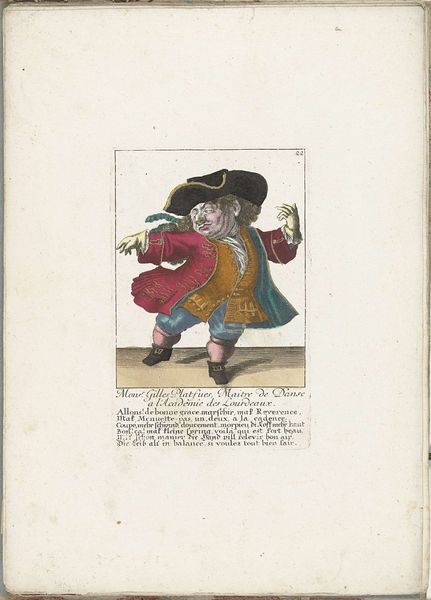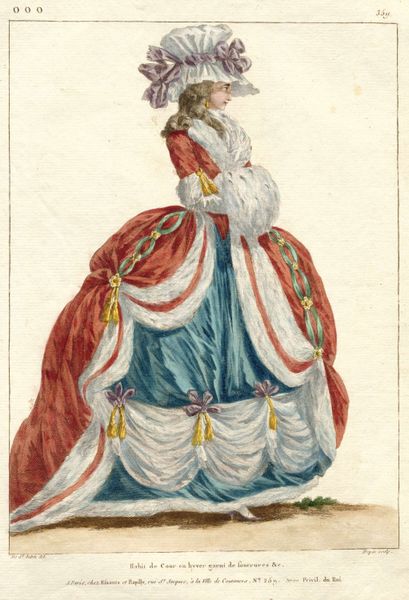
drawing, coloured-pencil, print, watercolor, ink
#
drawing
#
coloured-pencil
# print
#
caricature
#
caricature
#
watercolor
#
ink
#
coloured pencil
#
history-painting
#
watercolor
Dimensions: sheet: 10 3/16 x 8 1/16 in. (25.8 x 20.5 cm)
Copyright: Public Domain
Curator: Oh, the late 18th, early 19th century—such a ripe period for satire. What springs to mind when you view this caricature, titled "From Sir William Hamilton's Collection," executed around 1801 by James Gillray using ink, watercolor, and coloured pencil? Editor: The first impression is of weight, of a figure profoundly burdened. The mass of that jacket dominates the composition, looming over what little we see of the feet. The pinkish hue, normally suggestive of vibrancy, here feels almost oppressive. Curator: Indeed. Consider the distortion: the figure is presented without a head, with disproportionately large shoulders. It evokes the socio-political climate, hinting at the ruling class's detached and inflated ego, their obliviousness perhaps, given the headlessness. The stark whiteness of the powdered wig also stands out in contrast. Editor: And the execution! The lines of the ink are so deliberately crude. It’s not simply the image *of* excess; the work embodies the excess of material itself. I’m thinking about the artist's labor here too, reproducing it, publishing it as a print – for distribution, for consumption. What kind of paper, what pigments were available? These details would ground our understanding of Gillray’s artistic intent. Curator: Precisely. Observe the composition. The subject stands atop a plinth inscribed with “D—n Q V—z O—n.” One reading implicates Lord Nelson in his divorce scandal at the time. Formally, the lettering functions almost as a base note grounding the entire ludicrous construct above. The delicate watercolor washes in the background accentuate the acidic sharpness of the caricature itself. Editor: What interests me is the social role of this caricature, beyond the formal arrangement. Was it popular? Who bought and circulated these prints? It offers a lens into the cultural climate and class tensions of the era. Were those watercolor washes a common and expensive element, therefore intended to target wealthy patrons? Curator: The artist cleverly uses recognizable motifs of nobility. Those delicate, gold embroidered details on the jacket shoulders lend an ironic grandeur. Note how Gillray has rendered a political critique using artistic manipulation, reducing a human figure into an absurd spectacle of symbolic parts. Editor: Absolutely. It forces us to examine the labour, not just behind the production of art, but also behind the maintenance of social status—the hours and resources sunk into appearing a certain way. That ‘collection’ aspect—where the artwork situates this human figure within one. Curator: Seeing it this way underscores the skill required to craft effective visual satire. It is an economy of form achieving maximum critical impact, truly highlighting the artist’s understanding of his subject and medium. Editor: Considering it through that lens brings out a lot about our modern-day material conditions also. The critique of labor and representation endures, even across centuries.
Comments
No comments
Be the first to comment and join the conversation on the ultimate creative platform.

